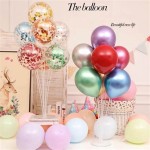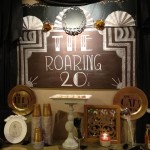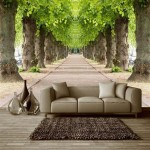Classroom Door Decorating Ideas For Winter
Winter’s arrival often brings a sense of wonder and anticipation. Transforming a classroom door into a winter-themed landscape can significantly enhance the learning environment. A well-decorated door fosters a welcoming atmosphere and can serve as a creative outlet for both educators and students. The following details various ideas for decorating classroom doors during the winter season, encompassing a range of styles and skill levels.
The Snowman Extravaganza
One popular and easily recognizable winter theme revolves around snowmen. This theme allows for significant personalization and can be adapted to different age groups and artistic abilities. The basic framework involves creating a snowman figure, which can be crafted from various materials like paper, felt, or even fabric. The snowman's accessories provide ample opportunities for creative expression.
To initiate a snowman-themed design, the door can be covered with a background of light blue or white paper to simulate a snowy scene. The snowman's body can be constructed from three large circles, each slightly smaller than the last, cut from white poster board. These circles can be attached to the door using adhesive putty or tape, ensuring they are securely fastened.
The snowman's face is crucial for conveying personality. Eyes can be made from black construction paper, buttons, or even googly eyes, which add a playful touch. A carrot nose, typically crafted from orange construction paper, provides a classic detail. The mouth can be drawn with a black marker or created from small pieces of black felt, shaped into a gentle curve.
Accessorizing the snowman allows for further customization. A hat, scarf, and mittens can be added using a variety of materials and colors. A top hat, fashioned from black construction paper or felt, offers a traditional look. A colorful scarf, made from fabric scraps or yarn, can be draped around the snowman's neck. Mittens, cut from felt or paper, can be attached to the snowman's sides, adding a touch of warmth and character.
To enhance the winter scene, snowflakes can be added around the snowman. These snowflakes can be created from paper, using simple folding and cutting techniques. Alternatively, pre-made snowflake decorations can be purchased from craft stores. Adding glitter to the snowflakes can create a shimmering effect, simulating the sparkle of real snow. The addition of cotton balls placed around the base of the snowman can further enhance the illusion of a snowy landscape.
Variations on the snowman theme include creating a "melted snowman," which showcases a puddle of white paper with the snowman's accessories scattered around it. This playful take on the traditional snowman can be particularly appealing to younger students. Another option is to create a collaborative snowman, where each student contributes a piece of the snowman or its accessories, fostering teamwork and a sense of shared accomplishment.
Winter Wonderland Landscapes
Beyond individual characters, creating a complete winter landscape on the classroom door offers a more immersive experience. This approach involves depicting a full scene, complete with trees, mountains, and other elements associated with winter. This theme allows for the incorporation of various artistic techniques and can be adapted to reflect specific regional landscapes or fantasy settings.
The foundation of a winter wonderland landscape is the background. This can be achieved by covering the door with a large sheet of light blue or white paper. Alternatively, a painted background can be created using acrylic paints or tempera paints. The background should depict a snowy sky, potentially with hints of a setting or rising sun, adding depth and visual interest.
Trees are essential elements of any winter landscape. These can be created from various materials, including construction paper, felt, or even branches gathered from outdoors. Cone-shaped trees, cut from green construction paper and decorated with white paint or glitter to simulate snow, are a simple and effective option. More elaborate trees can be created from felt, using multiple layers of fabric to add texture and dimension. Real branches, painted white and adorned with glitter, can provide a natural and rustic touch.
Mountains can be incorporated into the landscape to add a sense of scale and grandeur. These can be created from cardboard or foam board, covered with white paper or fabric. The mountains can be painted with shades of gray and white to create a realistic effect, and the peaks can be dusted with glitter to simulate snow-covered summits.
Adding details to the landscape can further enhance its realism and visual appeal. Small houses, crafted from construction paper or cardboard, can be placed in the foreground, suggesting human presence in the winter scene. Animals, such as deer, rabbits, or birds, can be cut from paper or felt and added to the landscape, bringing it to life. A frozen lake or river, depicted with blue paper or fabric, can add a sense of depth and perspective.
To create a more interactive and engaging winter wonderland landscape, consider incorporating elements that allow students to participate. For example, a "snowball fight" scene can be created using crumpled paper balls, allowing students to "throw" snowballs at the door. Alternatively, a scene depicting students engaged in winter activities, such as sledding or ice skating, can be created, allowing students to see themselves reflected in the winter landscape.
Themed Around Winter Holidays
The winter season is often associated with various holidays, including Christmas, Hanukkah, and Kwanzaa. Decorating the classroom door with themes related to these holidays can be a culturally sensitive and inclusive way to celebrate the season. It is crucial to approach this theme with respect and awareness, ensuring that all students feel represented and valued.
When incorporating Christmas themes, avoid solely focusing on religious imagery. Instead, consider focusing on secular aspects of the holiday, such as gift-giving, family gatherings, and winter traditions. Images of Christmas trees, adorned with ornaments and lights, can be created from construction paper or felt. Stockings, hung above a fireplace, can be crafted from fabric scraps and decorated with festive patterns. Snowflakes, candy canes, and other holiday-themed decorations can be added to create a festive atmosphere.
For Hanukkah-themed decorations, focus on symbols associated with the holiday, such as the menorah, dreidel, and Star of David. A menorah, created from construction paper or felt, can be prominently displayed on the door. Dreidels, decorated with Hebrew letters, can be hung around the door. The Star of David, crafted from blue and white paper, can be incorporated into the design.
Kwanzaa-themed decorations should reflect the seven principles of the holiday, known as the Nguzo Saba. These principles include unity, self-determination, collective responsibility, cooperative economics, purpose, creativity, and faith. Images representing these principles can be created from construction paper or felt. A kinara, a candleholder with seven candles, can be prominently displayed. Corn, representing children, can be arranged near the kinara. Colors associated with Kwanzaa, such as black, red, and green, should be incorporated into the design.
When creating holiday-themed door decorations, it is essential to be mindful of religious diversity within the classroom. Avoid imposing any particular religious beliefs on students. Instead, focus on creating a welcoming and inclusive environment that celebrates the richness and diversity of winter traditions. Consider incorporating elements from multiple holidays into the design, ensuring that all students feel represented and valued.
Regardless of the chosen theme, certain practical considerations apply to all classroom door decorations. The decorations should be securely attached to the door, using adhesive putty or tape that will not damage the door's surface. The decorations should not obstruct the door's opening or closing mechanism. The decorations should be visually appealing and age-appropriate, reflecting the students' interests and skill levels. Finally, the decorations should be durable and able to withstand the wear and tear of daily classroom use.
Classroom door decorations can serve as a powerful tool for fostering a positive and engaging learning environment. By carefully selecting a theme and incorporating creative elements, educators can transform their classroom doors into stunning winter landscapes that inspire and delight their students.

68 Amazing Ideas For Winter And Holiday Classroom Doors

68 Amazing Ideas For Winter And Holiday Classroom Doors

68 Amazing Ideas For Winter And Holiday Classroom Doors

20 Creative Classroom Door Ideas For Winter Teachervision

See 33 Classroom Door Design Ideas For Winter And The Holidays

Kindergarten Activities For December Winter Classroom Door School Decorations

School Holiday Door Decorating For Ideas Teacher S Brain

Winter Classroom Door Decorating Ideas Today S Creative

60 Amazing Classroom Doors For Winter And The Holidays Door Decorations School

45 Festive Classroom Doors To Get In The Holiday Spirit
Related Posts







